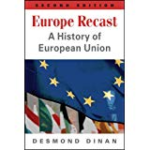Years ago I lectured in Germany at the University of Trier. While I was there these German students asked me about the cost of tuition at my school, a public institution in Oregon. At the time, my university had by far the lowest tuition rate in the state. But when I told my students what a year at my institution would cost students in tuition they were horrified. Many of them started laughing. They all gathered around me to tell me how outrageous that charge was.
In Germany at that time (about a decade ago) individual states set tuition policies. In most states tuition was free. In others there would be very low; perhaps as little as two hundred dollars. Of course the university was starved for funds. But the students were exceptional, and received an immense amount of hands-on time with their faculty. The program was rigorous, even though funding levels were much less that an American institution.
Now when I talk to my American students the subject of their student debt is always there. It shapes the majors they choose, and their career plans afterwards. Twenty years ago I would ask students in my “Introduction to International Studies” class what career path they preferred. Ninety percent of my students or more would raise their hands when I said “non-profits.” Only one or two would say business. Now that is reversed, and easily ninety percent of my students want a career in international business when they come into my introductory class. I think that is wonderful, and I want to support their career aspirations any way I can. I supervise internships, may connections to local businesses, and encourage students to do a business minor. But I wish that the choices that students made reflected their personal interests as much as their familial and financial pressures.
It is possible to create a different system. In Quebec, Canada, the in-province tuition at Concordia University would be under $3,000 a year U.S. But even that is higher than many European institutions. James Melville recently tweeted a video about how higher education is free in Denmark, and some other European nations.
I have some colleagues who hate when I talk about university finances, because they say it is part of the “business model” for higher education. There is some truth to what they say. But it’s also the case that the way we offer education in the United States imposes incredibly high costs on both our students and their families. We need to rethink our education system from the ground up. And both state and federal governments have to stop the disinvestment in higher education that has taken place over the last twenty years. At many private universities in the United States tuition alone costs over $50,000 a year. That’s without books, fees, room and board. So it might cost a student $70,000 a year to go to a private institution.
Teaching at an institution that has a tuition perhaps less than a sixth of that cost, I know that the private institutions aren’t six times better. But higher education is not a rational market because parents often feel that they cannot discuss the cost of education with their children. At the same time the perceived differences between universities is so great that students fear going to a lower level state institution. Of course, these perceptions are often wildly inaccurate. But they reflect inequalities in funding that have been taking place over a long time.
The higher education system in the United States is highly unequal, and provides a massive disincentive to education for lower-income families. Of course, student loans help many students complete college. But these funds not only saddle these students with immense debt, but also create a huge debt bubble. Ultimately, the loan-based system is part of the problem, as it papers over the fact that the business model for higher education is bankrupt. We need as a society to create institutions that charge students a fraction of the current amount. That will entail more online programs and offerings. But it should be done with tenured faculty, who are paid a living wage. It should not be done on the backs of adjuncts, who have no job security and often teach at multiple institutions for miserable wages. Universities have to drive down costs. But I don’t think that there is any way for tuition in the U.S. to drop dramatically without returning to the funding levels for state institutions that we saw in the 1980s.
Denmark, Germany and other European nations offer higher education for free. Their schools create a highly educated citizenry and workforce, which benefits the entire society. How high do tuition costs in the United States have to go before parents and students say enough; we have to make a fundamental change? What will be most difficult is that Wall Street makes immense profits off of student loans, which have been securitized. So it will be a third rail, much like talking about the public option for health care.
When I first began my career, one of my colleagues in Joplin, Missouri told me that his student loan debts were greater than his mortgage. That was in 1995. I can only imagine the pressure that today’s graduates may face. The United States doesn’t need to become Denmark, but can we find some inspiration and ideas from these models?
If you are interested in hearing more about global topics, please listen to my podcast, Dispatch 7. You can find it on Spotify here, or by searching whichever podcast platform you prefer.
Shawn Smallman, 2019







